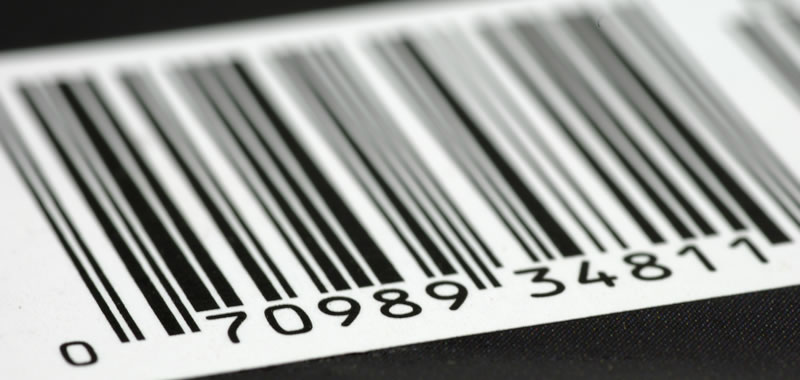
It’s 10 p.m, do you know where your inventory is?
For many brands, the answer is a resounding “yes,” thanks to the common technologies – and some emerging ones - that take the guesswork out of inventory control. Barcodes and RFID chips have become prevalent methods to help brands keep tabs on their products (and other assets), tracking them down to the individual item. The result? Elimination of inefficiencies and redundant systems, measurable reductions in shrinkage, even awareness of gray market sales and attempts at counterfeiting.
These technologies can be integrated directly into your product labels, enabling those labels to deliver even more value than they already do. How do these technologies work and, most importantly, which technology should you choose based on your situation?
The approach you choose will depend on your brand’s needs, the challenges you face, and how much you’re willing to invest in required technology, such as barcode scanners and RFID readers.
Here, we’ll explain how these two security label features support product identification needs and preserve your brand’s integrity. We’ll dissect the pros and cons of both options, so you can begin an informed conversation with your label printer.
Barcodes
What is a barcode? You’re probably familiar with the zebra stripe barcodes that grace almost every product sold in stores. While this style of barcode usually has height, the thickness and spacing of the individual lines are what barcode readers detect. These barcodes are considered one-dimensional.
One-dimensional barcodes can encode a relatively limited amount of data. For example, Universal Product Codes (UPCs), readable by virtually every point-of-sale system in existence, are strings of 12 digits.
On the other hand, two-dimensional barcodes can contain much more information. Typically, this type of barcode features a grid-like pattern of light or dark modules, each module representing a byte of information.
The QR (quick response) code is a specialized two-dimensional barcode developed specifically for use in marketing programs. This variation of barcodes can contain up to 4,296 alphanumeric characters or 7,089 numeric characters, more than enough for a hyperlink to a marketer’s website. Other one- and two-dimensional standards, such as GS1 Databar and PDF417, can hold even more data. When the barcode information can be cross-referenced with a writable database, barcodes can reference massive amounts of information. For example, PDF417 barcodes are commonly used in airline boarding passes, which not only provide information about the passenger’s flight, but also reference other important security information about the passenger in question.
Why are barcodes useful? Two-dimensional barcodes in particular can provide highly-detailed information about a product, its components, and their provenance – all in a relatively small amount of space.
Barcodes can be especially useful in processes for documenting the details specific to production runs, batches, or even individual product units. The concept of electronic pedigree or “epedigree” in pharmaceuticals, for example, calls for the creation and maintenance of an electronic record containing details of manufacturing, distribution, retail, and dispensing of pharmaceuticals. While many approaches have been developed for accomplishing this type of record keeping – for pharmaceuticals as well as other industries – most such systems rely on barcodes to carry essential data and to provide a reliable reference for updating events to the electronic record. This level of detailed, item-level tracking can be deployed in other contexts, such as prevention of counterfeiting and detection of product diversion in luxury goods markets.
It’s also relatively easy for machines to read barcodes and translate the encoded data into useful information. Brands can easily record and re-access large volumes data at every step in their inventory control processes.
Considerations: Barcodes only work with the right barcode readers. Simple one-dimensional barcodes can be read with laser scanners, while two-dimensional barcodes require more sophisticated types of optical readers. Most smartphone cameras have the ability to function as optical readers, a development that has helped greatly to increase the utility of barcodes in recent years. Both laser and optical readers must have a clear line of sight to a barcode to register it.
Because barcodes are printed images, issues such as resolution, size, and clarity come into play as well. If a barcode is torn, smudged, or faded, it may become unreadable.
Certain barcode standards, such as Data Matrix, are known for their ability to encode large amounts of information in a tiny footprint. But higher capacity standards, such as PDF417, have larger dimensions and so require more space on packaging and labels.
RFID
What is RFID? Radio-frequency identification (RFID) is a technology that uses electromagnetic fields to read information stored on tiny transponder chips – sometimes as small as the head of a pin. These chips are paired with RFID antennas, which typically are much larger.
A typical RFID chip is non-powered, collecting energy from its proximity to the reading apparatus. When a chip is activated, it communicates instantaneously with the reader, passing on identification information.
Extremely versatile, RFID is used in everything from inventory control to pet identification to timing sporting events. In 2016, Delta Air Lines introduced an RFID-based real-time luggage tracking system.
Why is RFID useful? One of the main advantages of RFID is that chips can be read in bulk. Unlike barcode technology, RFID readers don’t need to “see” RFID chips to read them; the reader simply needs to be near the chip. For example, an RFID reader placed on a gantry can identify the entire contents of a railroad car or shipping container as it passes under the gantry.
Large retailers rely on the speed and accuracy of RFID technology for efficient inventory tracking. Target, for example, cited the item-level tracking abilities of RFID for helping optimize replenishment and reduce “out-of-stock” lost sales, helping boost its online sales 20 percent.
Considerations: While RFID is immensely versatile and well-suited to addressing a multitude of business challenges, the technology is vulnerable to exposure to liquid, impact, shock, or magnetic fields, any of which can render the chips inoperable.
While individual RFID chips are relatively cheap, the equipment to read them can be expensive. However, this expense should be weighed against the labor and time costs of other inventory control systems.
Which Option Is Best for Your Brand?
One inventory control option is not better than the other. Most modern label printers will be able to create labels for your brand embedded with RFID chips or barcodes. The best option for your brand depends on your budget, your goals, and your current infrastructure for reading the labels. Start by discussing your needs with an experienced label printer.
What else do you need to know to make smart decisions about labels? Find out in our free download, “The Custom Label Buying Guide: An Inside View of What Makes a Great Label”.

